Taking a break from writing and processing images for the final Katmai blog entry…I went exploring the Pacific Coast, and wound up taking sunset images of Pigeon Point Lighthouse, located between Santa Cruz and Half Moon Bay.
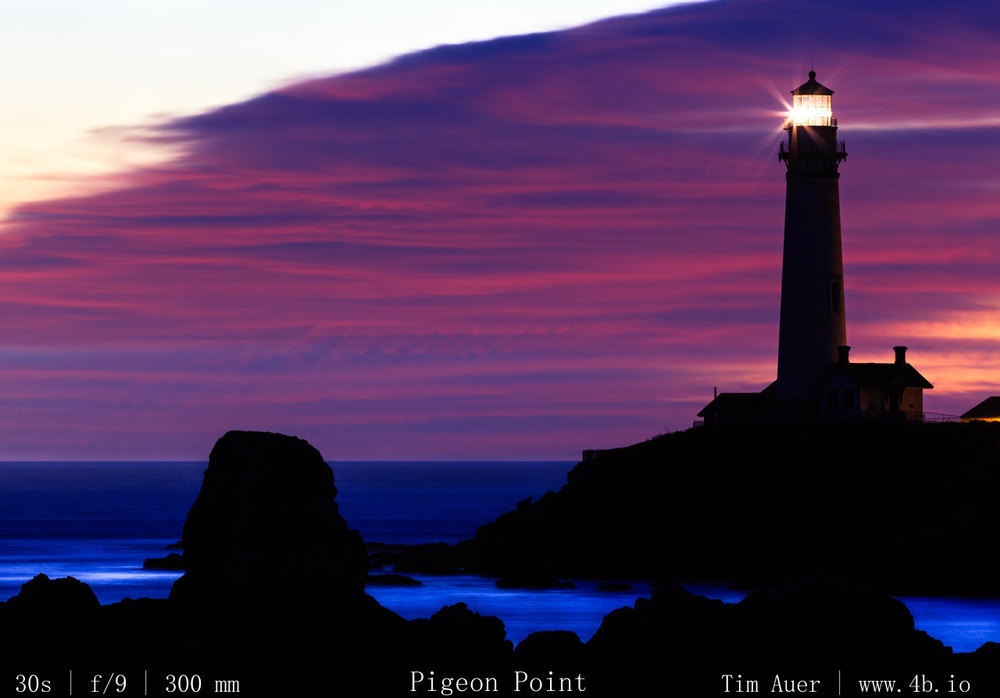
Its a quick 65 minute drive from Mountain View. Following a winding Rt. 84 over the Santa Cruz mountains [see map below], driving through redwood forests, past an Alice’s Restaurant in Woodside and down to the ocean. Arriving at the Lighthouse about two hours before sunset, using the time to hike on the trails scouting the locations.
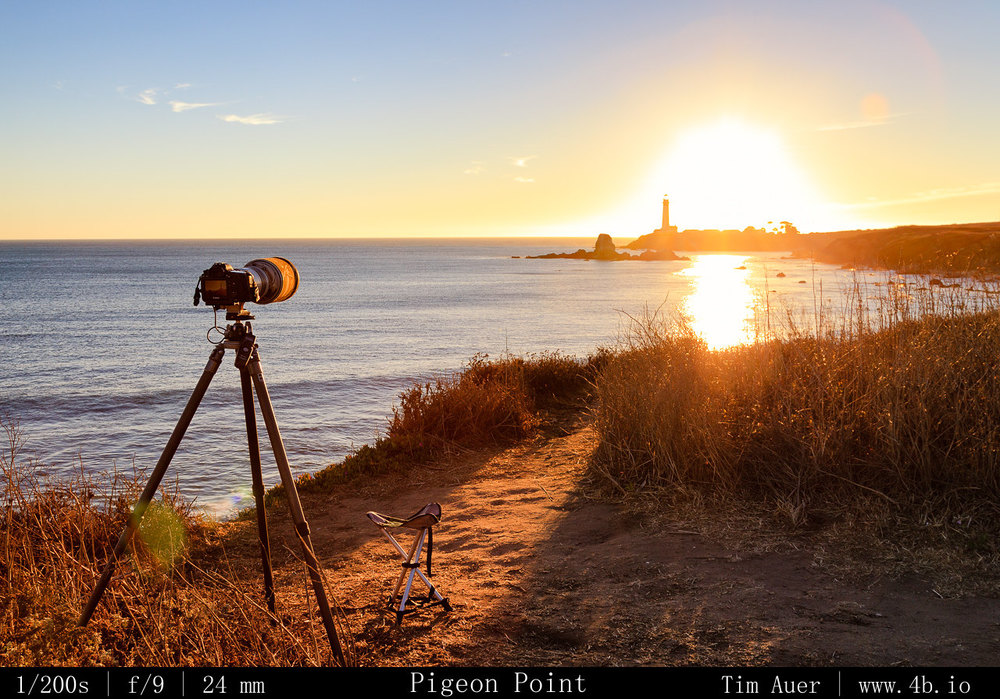
For the lighthouse shoot, I used two bodies and 3 different lenses. My primary goal was to capture the lighthouse and ocean with the site’s signature rock formations in the foreground. And I wanted the rock formation compressed with the lighthouse. The compression meant use of telephoto lens, as opposed to a wide angle, and I wanted to use a 300mm F/2.8. But would there be a suitable location available to fit everything in frame using such a beefy lens? It was a tight squeeze, but fortunately there was a perfect spot for the image I had in mind. After settling on a couple spots, using the 300mm on the full frame 6D, I set up one of my tripods on a bluff south of the lighthouse, and pointed the barrel due west towards the lighthouse.
The second set-up consisted of a 1D Mk.IV and the 24-105mm. The 1D’s APS-H sensor provides 1.3 crop factor, so I knew I had a bit of extra reach that would complement the angle of view on the 6D+300mm set-up. This combination would be my roamer for the night, going where I go, while I would keep the 300mm+6D fixed as much as possible.
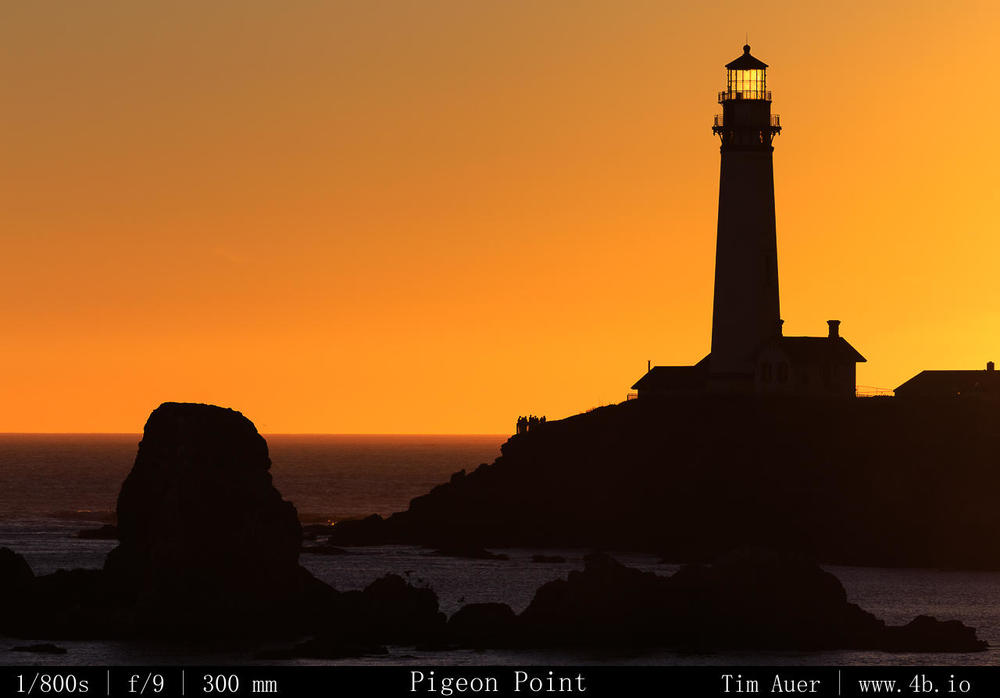
As the quality of light began to increase, I settled in for the next 4 hours, enjoying the scenery, listening to the waves splash at the foot of the cliff below me, and making sure to click the cameras..
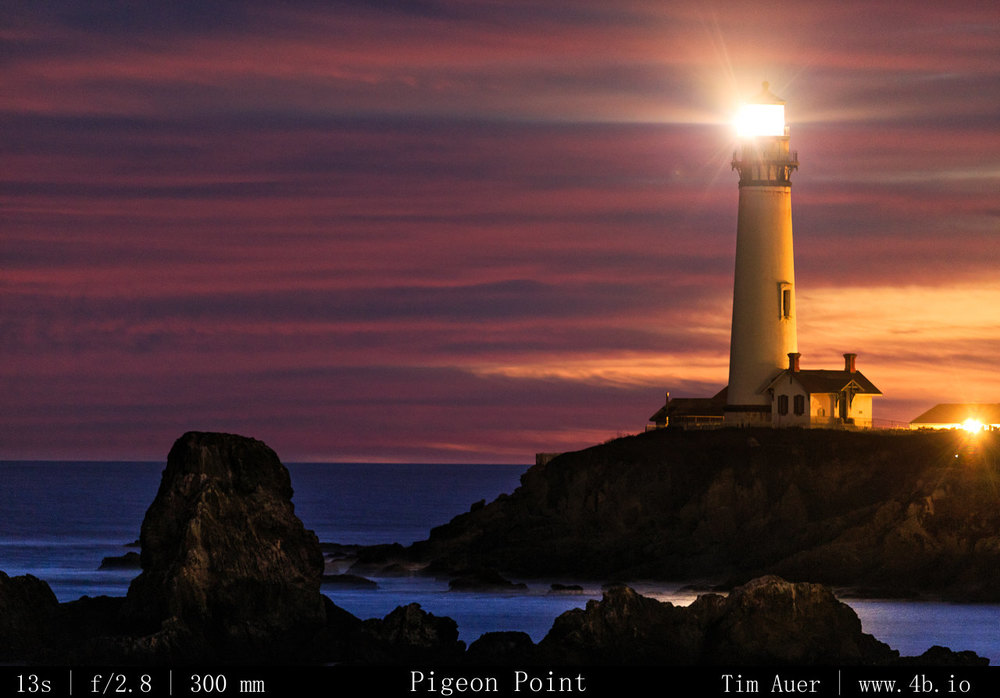
Once the sun dropped below the horizon, the clouds began to rush in from the north. This created a beautiful civil twilight background of pink and blue clouds that gradually enveloped the entire scene, but to the south and behind me the sky was clear. Once the last rays of sun faded from the upper atmosphere, signalling the end of astronomical twilight, the Milky Way revealed itself due SW and directly over the ocean. Pigeon Point sticks out into the Pacific and curves south, this is how I could look across land to setting sun in the west, and south to the Pacific.

At this point in the night, the 3rd brightest object in my field of view, after the lighthouse beacon, and the hostel’s exterior lights, was the planet Venus, setting to the SSW and reflecting in the still ocean. Using the 24-105, I recomposed with the ocean, sky and lighthouse sharing equal parts.
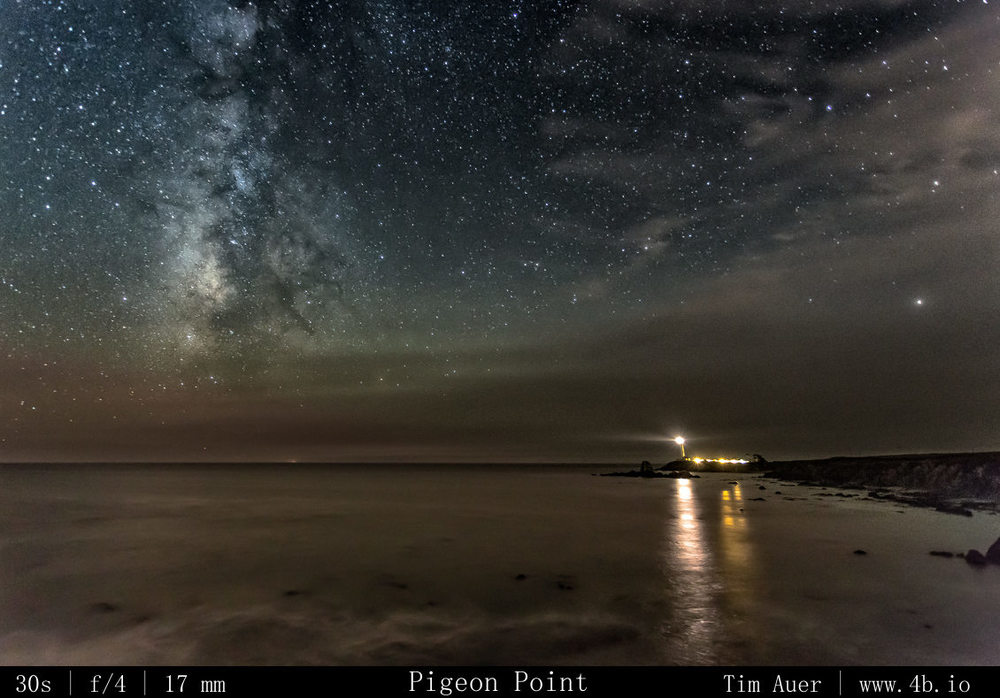
On the 6D, I removed the 300mm from the 6D and put on the 17-40mm wide angle for a more astrophotography look. I was able to get a couple Milky Way shots, but within 5 minutes of switching the lenses, the spreading clouds quickly obscured the sky. And I decided to call it a night.
Gallery
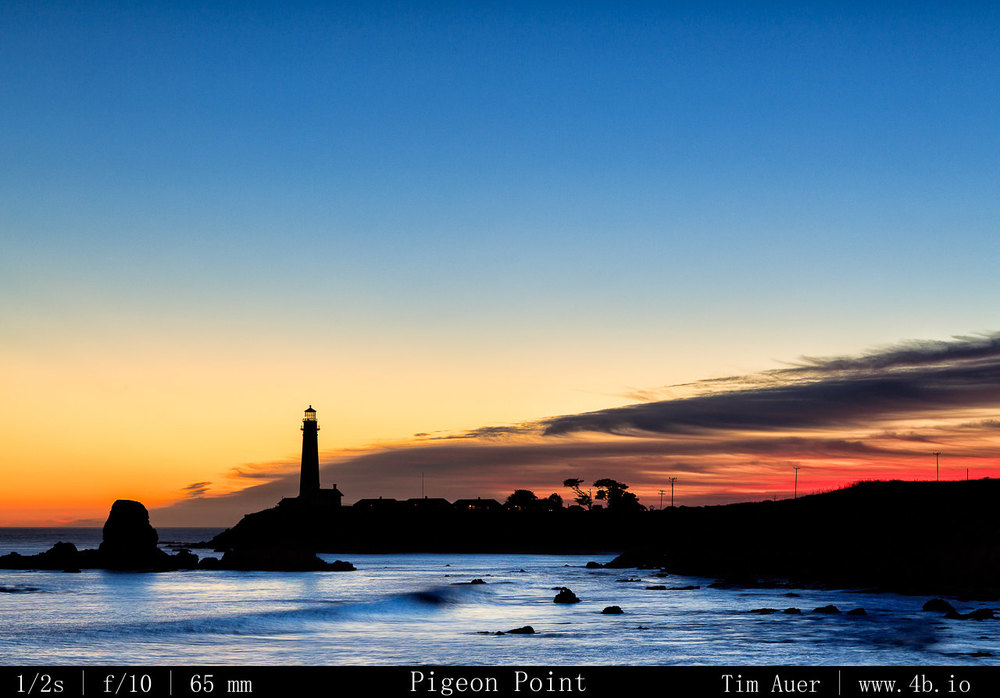
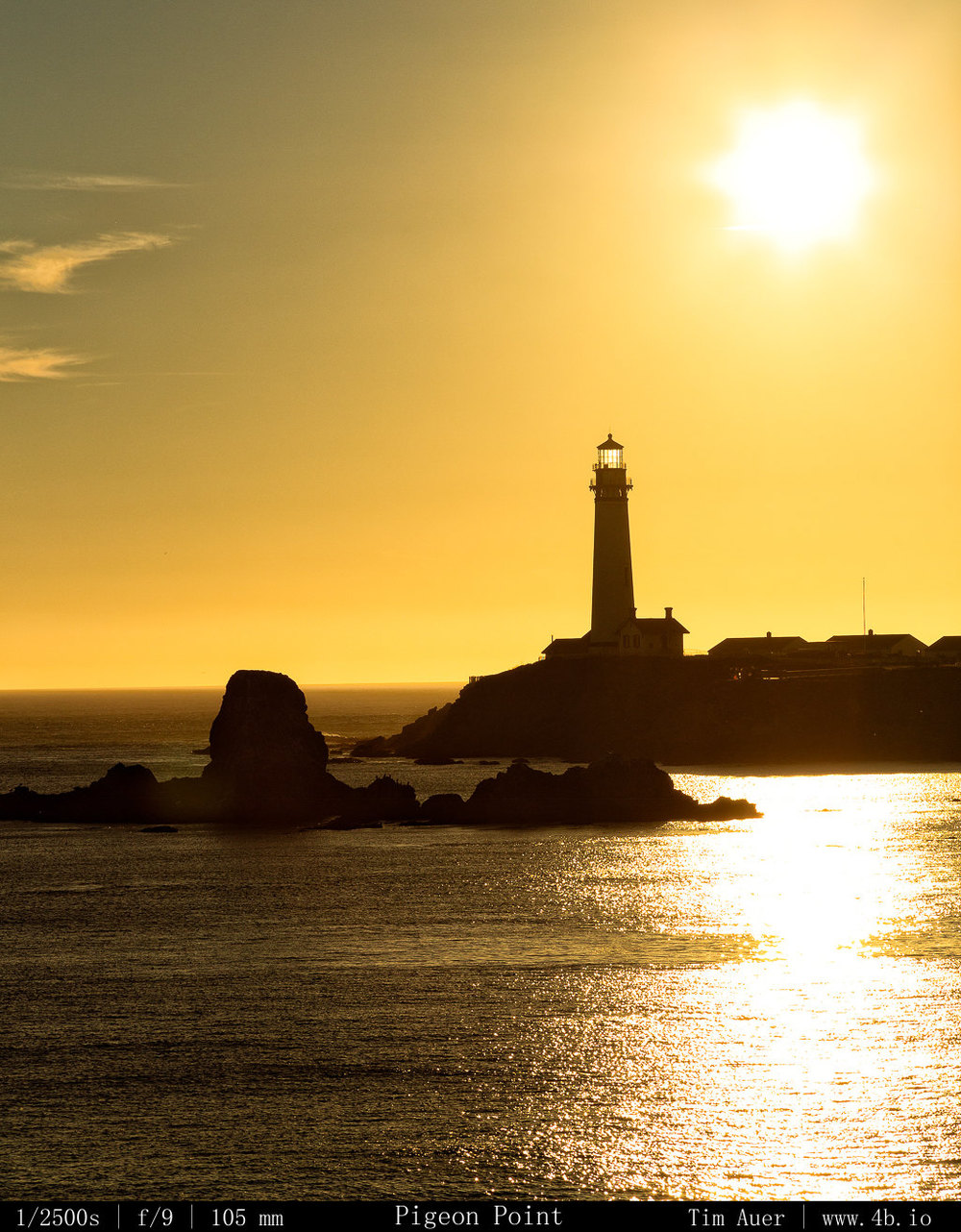

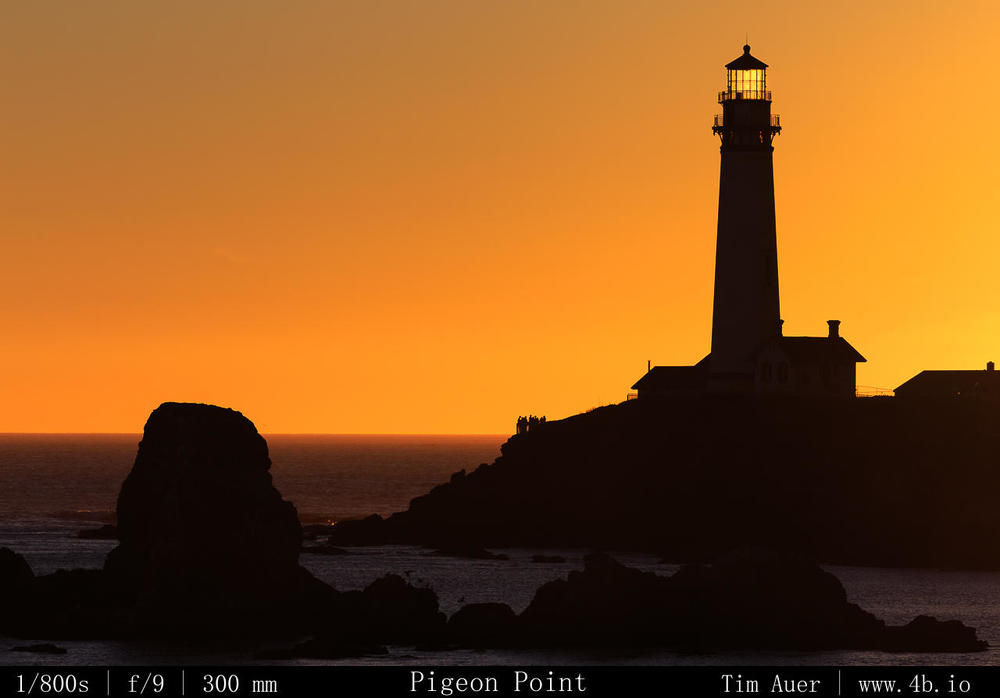
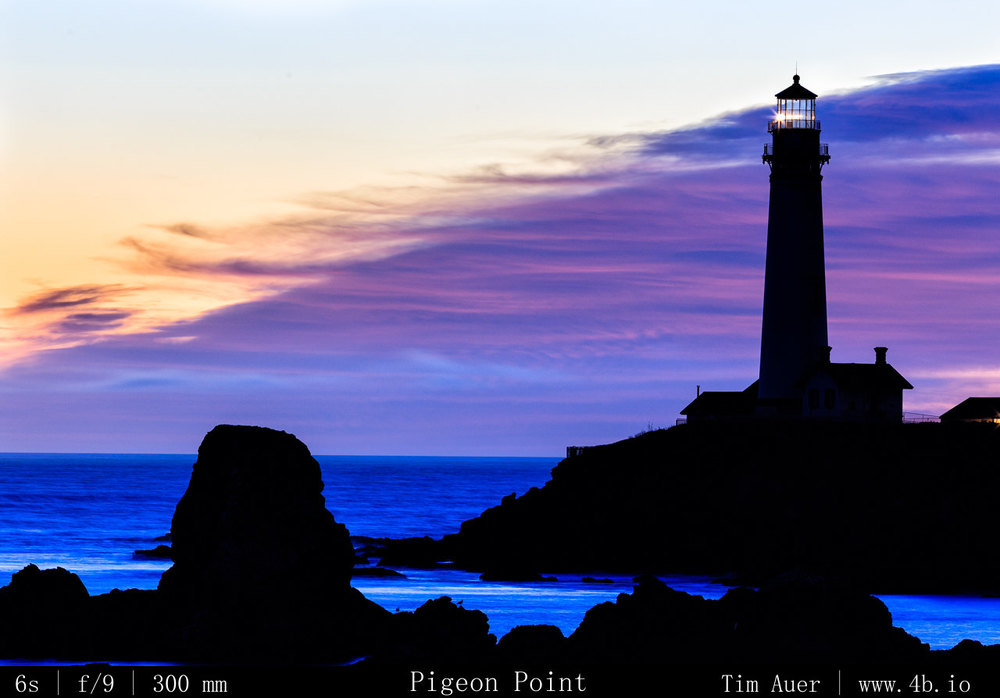
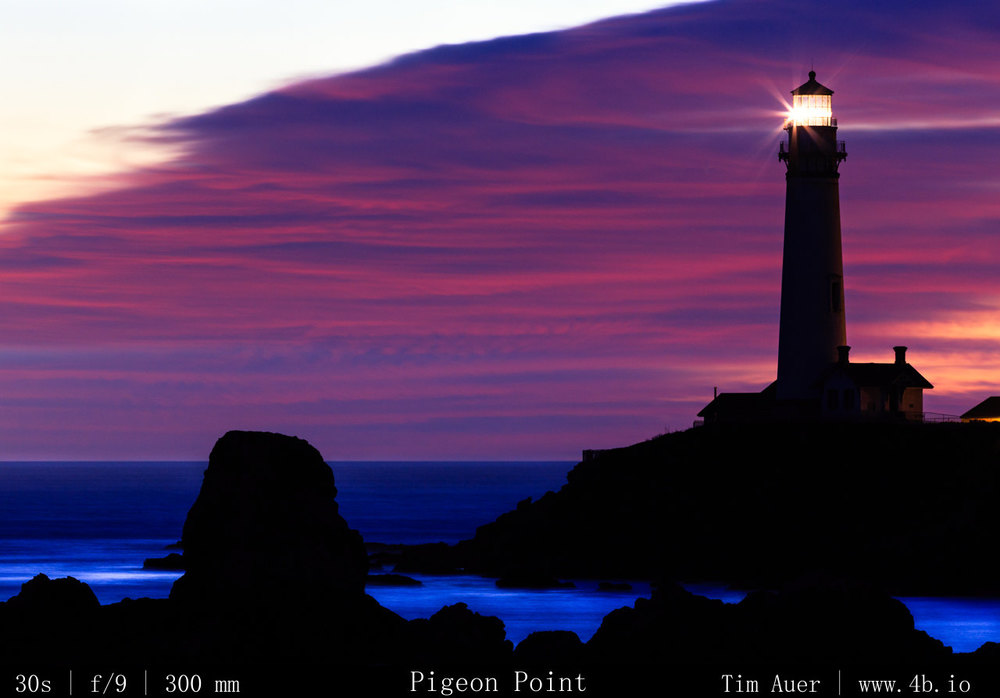
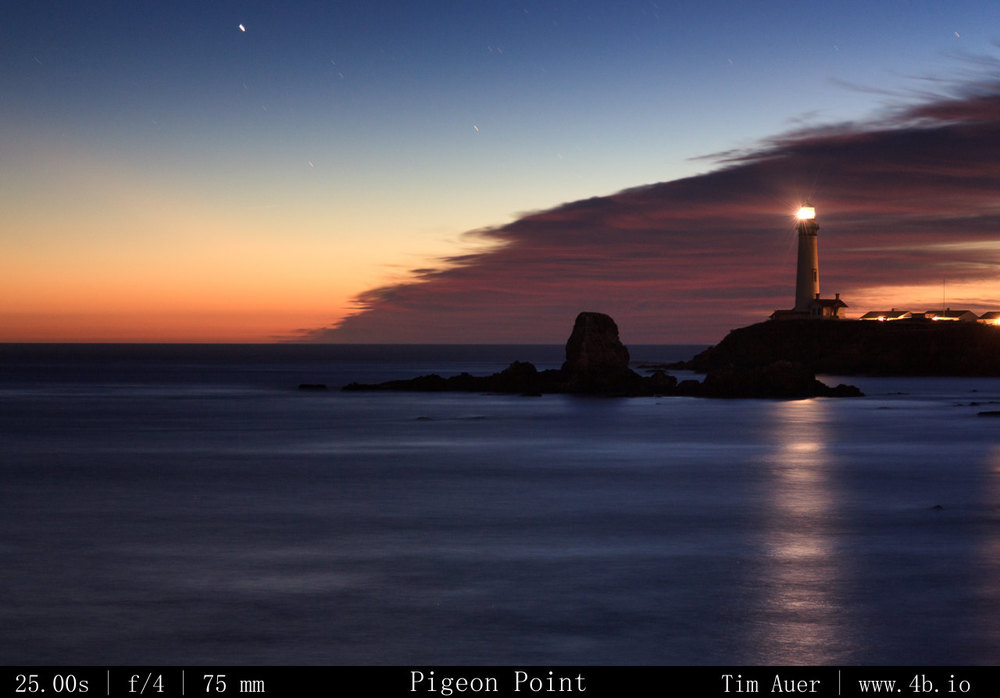
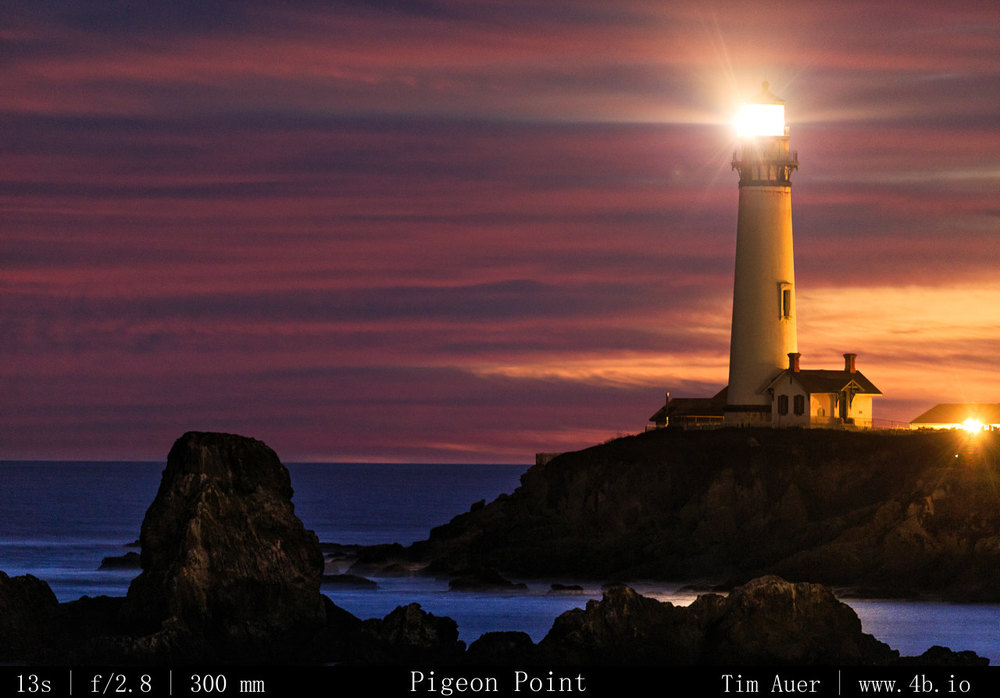
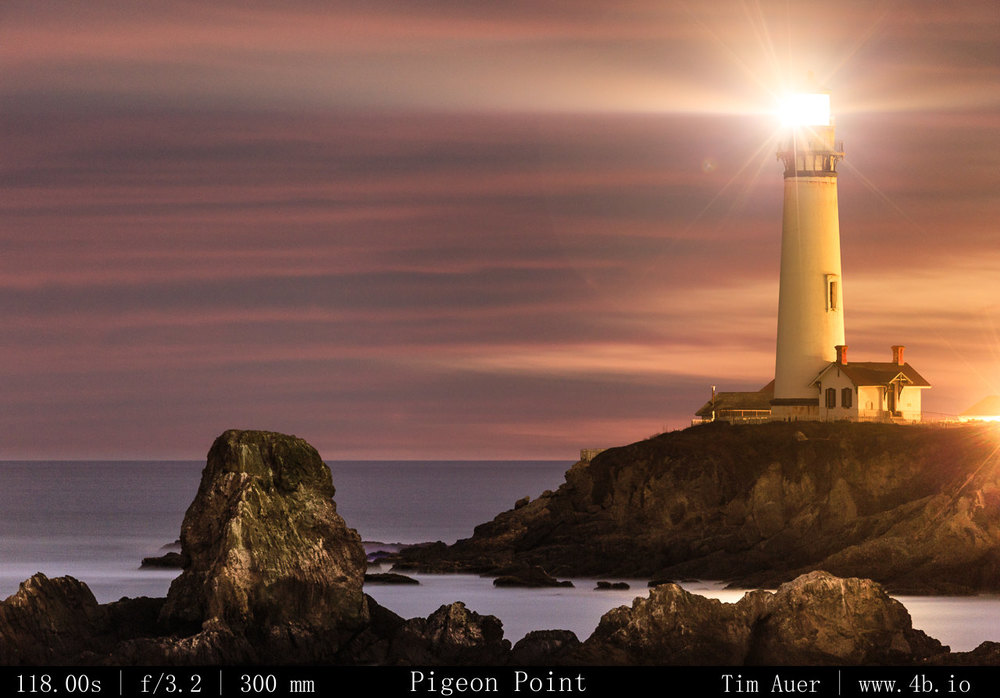

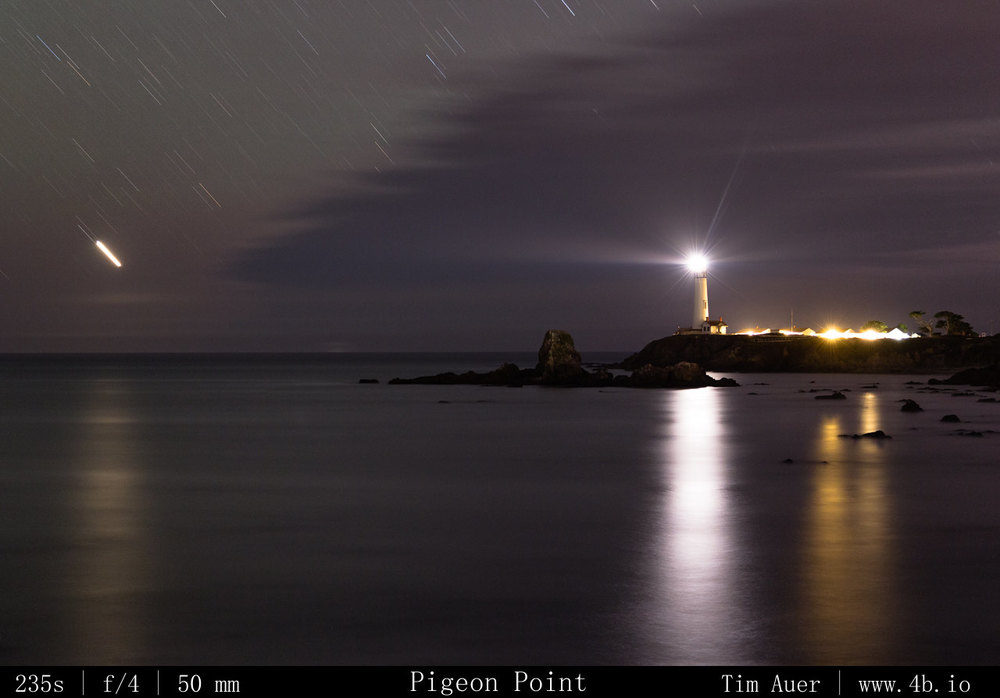

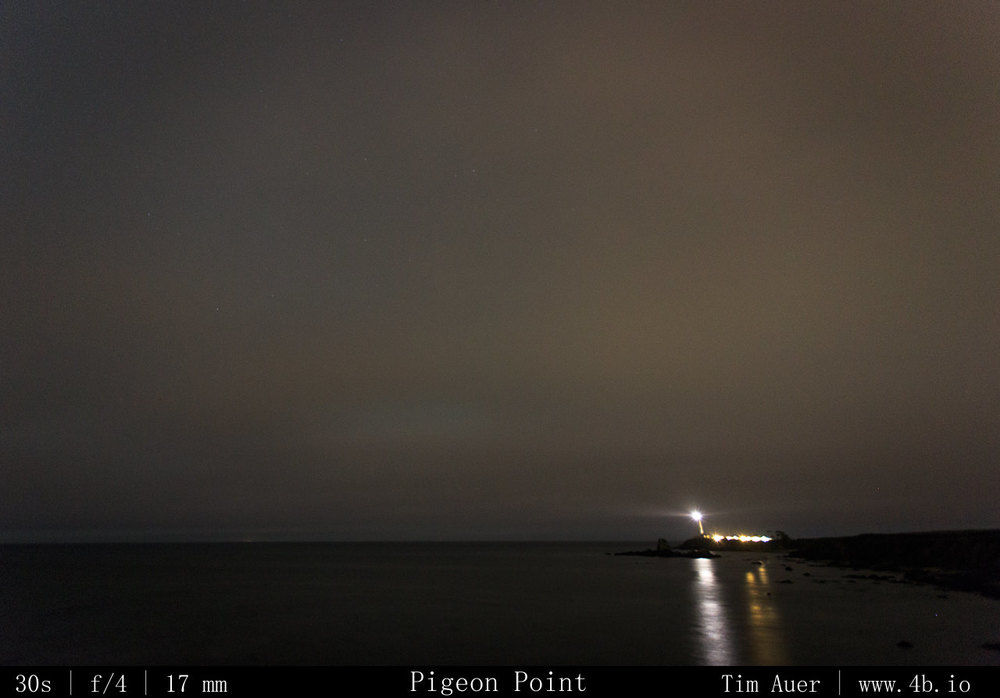
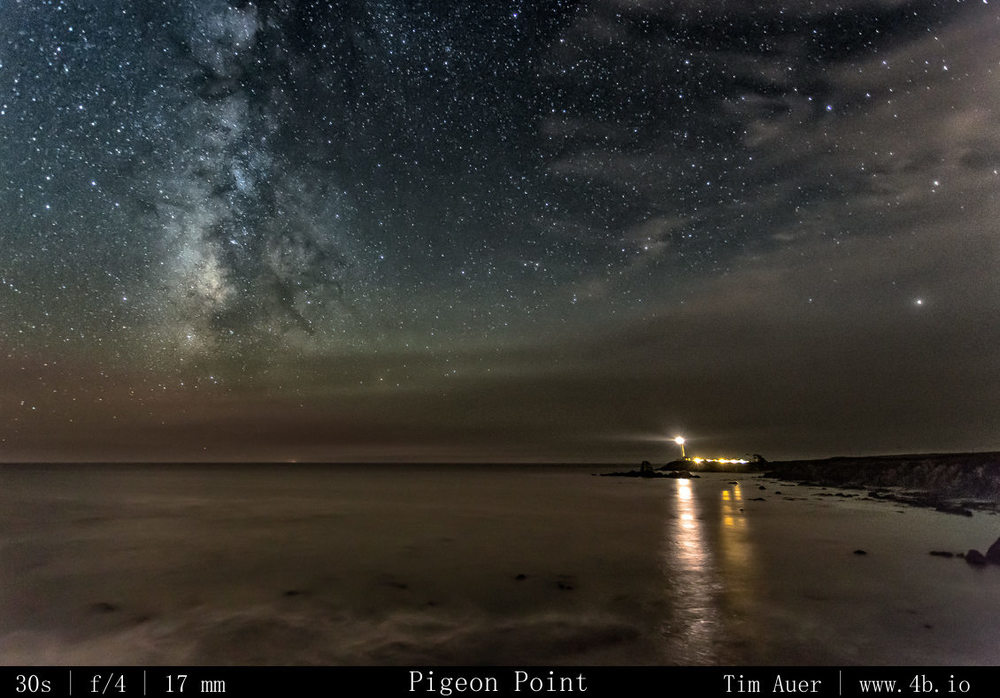

Location
Gear Used
Canon 6D
Canon 1D Mark IV
Canon 300mm F/2.8L IS
Canon 24-105mm F/4L
Canon 17-40mm F/4L
Gitzo Systematic
Gitzo Traveller
RRS BH25
RRS BH40
